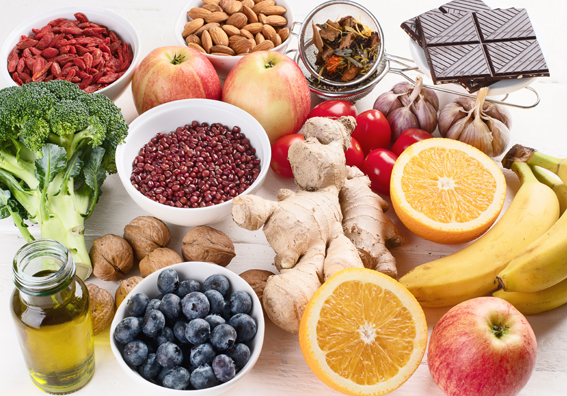Polyphenols
It is precisely the presence of hydroxyl (OH) groups that confers antioxidants their properties. Depending on the case, antioxidants can either donate a hydrogen atom or give an electron to oxygen, thereby saturating and neutralizing it.
Some antioxidants also possess chelating properties, which means they can bind to toxic substances such as lead, iron, cadmium, and other heavy metals, facilitating their elimination through the kidneys or the digestive system.
Not only do polyphenols possess antioxidant properties, but many of them have also been shown to have anti-inflammatory, antibacterial, and antiplatelet effects. Additionally, they can enhance the action of the immune system and facilitate the activity of certain essential enzymes for proper metabolism.
Flavonoids are further subdivided into flavones, isoflavones, anthocyanins, flavanols, and flavanones, all of which possess more or less similar potent properties. Like other polyphenols, they exhibit the same properties described earlier. There is abundant scientific literature that sufficiently supports the health-promoting properties of polyphenols due to their actions at the cellular and metabolic levels. These studies validate the beneficial effects of polyphenols and their potential impact on overall health and well-being.

